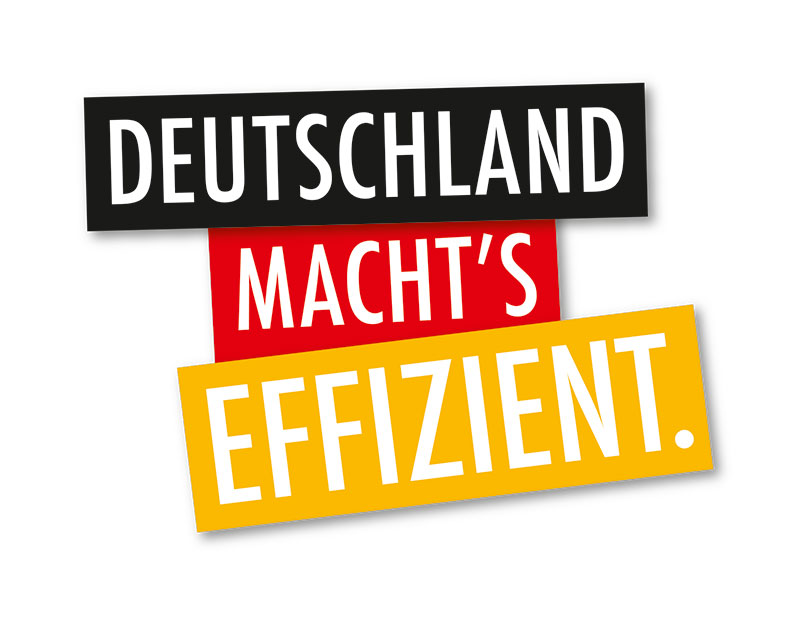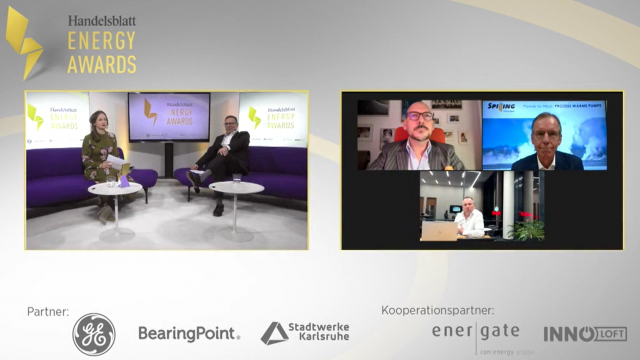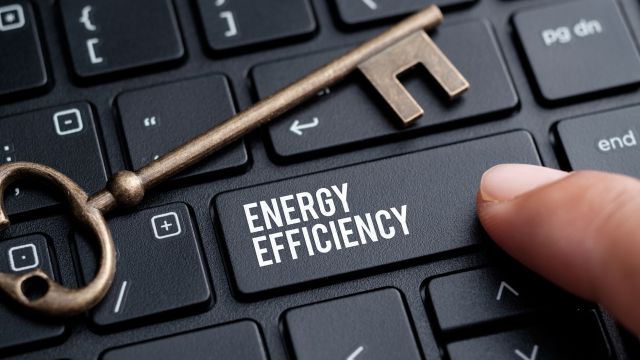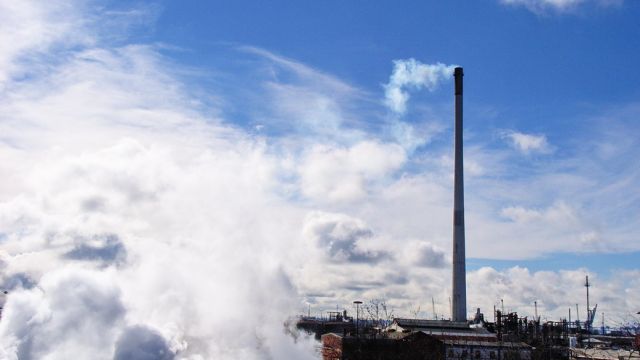BMWi program "Germany makes it efficient"

Industry's efforts to improve energy efficiency are always worthwhile - now there are two attractive options for the energy- related optimization of plants and processes within the framework of "Germany makes it efficient", a funding program launched by the German Federal Ministry of Economics and Energy:
- with the program "Federal funding for energy efficiency in the economy - Module 4: Energy-related optimization of plants and processes" you have the choice between a grant or a loan with partial debt relief of up to 30 percent of the eligible costs (up to a maximum of 500 euros per ton of CO2 savedzed companies, even up to 40 percent subsidy or up to 700 euros per ton of CO2 saved: BMWi-Modul
- the program "Federal funding for energy efficiency in the economy - funding competition". Within the framework of this competition, which is held every quarter, up to 50 percent funding is possible, with a maximum of 5 million euros per project. The prerequisite for this is that the measure would only pay for itself in 4 years or more without funding. This is where the best chances are for those who can demonstrate the highest CO2 savings per subsidized euro. Thus, efficiency projects with a longer payback period become profitable much faster. see BMWi-Förderwettbewerb
One focus of the funding guidelines is on investments in the modernization, expansion and new construction of plants, if this avoids waste heat or efficiently uses previously unused waste heat both inside and outside the company. In 2020, savings of at least one million tons of CO2 are to be achieved as a result. A funding volume of 600 million euros is available for this purpose. This is intended to expand the "Offensive Waste Heat Recovery" of the National Action Plan for Energy Efficiency (NAPE) into a comprehensive initiative for the avoidance and use of waste heat.
This program can be interesting for all Spilling products:
- For Spilling steam compressors to increase steam pressure: Utilization of low-pressure steam from waste heat that otherwise can no longer be used (steam recycling)
- For Spilling gas expanders for the conversion of pressure energy during natural gas expansion: here waste heat can be used for the necessary gas preheating
- For Spilling steam engines or steam turbines to generate electricity from excess steam from waste heat.
This funding is immensely attractive - winners are the environment and those companies that focus on energy efficiency projects that are eligible for funding, such as the project idea for steam recycling in the chemical industry that we are presenting here.
Steam recycling with Spilling steam compressors
Steam is an ideal heat transfer medium for industry. It has a high heat capacity, a high heat transfer coefficient, it is non-toxic, non-flammable and the raw material water is usually available at low cost.
When cooling exothermic reactions or heated products, water vapor is often produced as unusable exhaust vapor, as its pressure level is too low for other applications. Often the heat of this exhaust steam is simply released into the environment with air-cooled condensers in order to recover at least the processed condensate. Occasionally, some electricity is still generated from the energy of the exhaust steam with a condensing turbine, but usually with very low electrical efficiencies of typically only 7 to 15 percent. On closer inspection, there is often plenty of potential for optimization and possible efficiency measures. If exhaust steam with a certain overpressure (of at least approx. 1 barg) is available and high-pressure steam is needed elsewhere in an industrial plant, it is possible to compress the exhaust steam to the required pressure level by means of mechanical steam compression. The evaporation heat contained in the low-pressure steam can thus be made 100 percent usable again. The electricity required for driving the electric motor is comparatively low. For compression pressure ratios (p(out)/p(in)) of a factor of 1.5 to 5, approx. 5 to 15 times the steam energy can be made usable again for each kWh of electricity used.
Project idea within the framework of the BMWi funding competition:
Spilling presents the following project idea, which was classified as worthy of funding in the BMWi funding competition: In a chemical plant, up to 6 t/h of steam at 2 barg is produced during the cooling of a distillate. Since there are no consumers at this pressure level in operation, the heat in the steam has been released unused into the environment via air cooled condensers. The idea is now to compress the previously unused excess steam to 8 barg with a steam compressor and feed it into the company's internal steam network. In this way, not only the exhaust steam can be made usable, but also the natural gas-fired steam boiler can be relieved. With a steam throughput of 6 t/h and 6,000 full load hours, 25,200 MWh per year of thermal energy can thus be provided and the gas consumption in the steam boiler reduced accordingly.
The electricity required for compression amounts to approx. 4,500 MWh per year, which corresponds to about 18 percent of the steam output that can be reused. If the additional electricity demand and the natural gas savings are multiplied by the corresponding emission factors and offset, the implementation of the measure results in annual CO2 savings of 2,650 tons.
Costs of implementation:
Investment costs for steam compressor, piping and electrical work: around € 1,600,000 Incidental investment costs (for planning, installation, MSR and commissioning) around € 200,000, bringing the total investment costs to around € 1,800,000. The actual amount of the eligible costs in each case ultimately depends on what proportion of the total investment costs the efficiency-related costs (additional and ancillary investment costs) account for. Detailed information on calculating the additional investment costs can be found in the "General information on submitting applications" leaflet, which is available on the Energy Efficiency Competition website.
The basic criterion for admission to the competition is that the payback period of the project, calculated from the efficiency-related investment costs and the sum of the energy costs saved, is at least four years.
By using exhaust steam and increasing pressure, about 25,200 MWh of natural gas or 5,040 t of CO2 can be saved annually. This compares to the additional consumption of electrical energy of 4,500 MWh per year and the resulting additional emission of 2,390 t CO2. When offsetting the savings in natural gas at a price of 0.04 €/kWh and the additional costs due to the additional electricity consumption at 0.15 €/kWh and taking into account maintenance costs and the pleasant average costs saved for a CO2 tax, the efficiency measure pays for itself after 5.0 years without subsidies, and after 2.5 years with maximum subsidies.
The central criterion for the funding decision in the funding competition for energy efficiency is the CO2 savings per year achieved per funding euro (funding efficiency). In the project described above, this lies at the maximum possible funding amount of € 900,000 (50 percent funding rate) and an expected saving of around 2,650 tons of CO2 per year of around € 339 per ton of CO2 per year. The applicant can, however, decide for himself whether to choose a lower funding quota, thereby improving his funding efficiency and increasing his chances in competition.
| Characteristics for steam compression from 2 to 8 barg, 6 t/h steam flow rate | ||
| electrical power consumption at Ø 6 t/h steam flow rate | 0.75 | MW |
| thermal capacity of recycled steam quantity of 6 t/h | 4.20 | MW |
| assumed hours of full use | 6,000 | h/year |
| Investment costs | 1,800,000 | Euro |
| Steam compressor with accessories and commissioning: | 1,050,000 | Euro |
| Peripherals (buildings, pipeline construction, cabling etc.): | 750,000 | Euro |
| Compressor operating costs | 725,000 | Euro/year |
| Maintenance costs: | 50,000 | Euro/year |
| Energy costs (electricity): | 675,000 | Euro/year |
| Savings in gas operating costs | 1,087,500 | Euro/year |
| Energy cost savings (natural gas):* | 1008,000 | Euro/year |
| Saving of CO2 tax: | 79,500 | Euro/year |
| Total annual savings | 362,500 | Euro/year |
| Total annual CO2 savings | 2,650 | tons/year |
| Payback period | 5.0 | years |
| Basis: Costs: Natural gas: 40 Euro/MWh; electricity: 150 Euro/MWh; CO2: 30 Euro/tCO2 emissions: Natural gas: 0.2 t/MWh; electricity: 0.53 t/MWh * for alternative HP steam generation with natural gasfired steam boiler |
Our experts also have suitable solution proposals for your application. You can contact us here.



